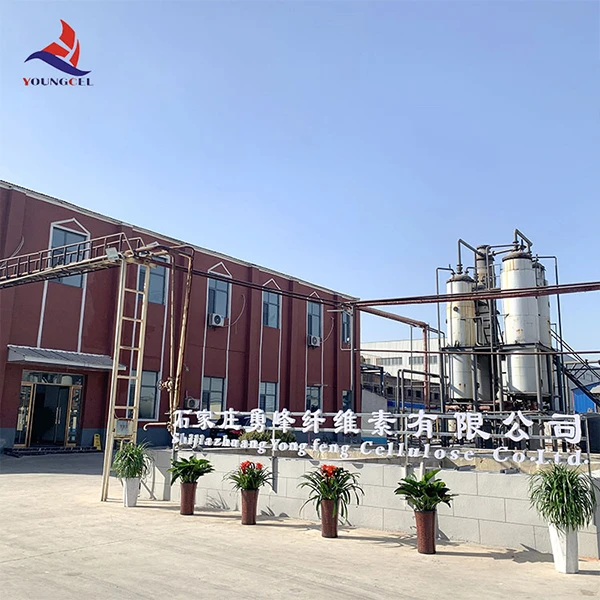Understanding Cellulose Adhesives Applications and Benefits
In the world of adhesives, cellulose-based options have gained significant attention due to their unique properties and versatility. Cellulose adhesives are primarily derived from cellulose, a natural polymer found in the cell walls of plants, making them an eco-friendly choice. This article explores the composition, applications, and benefits of cellulose adhesives, highlighting their role in various industries.
What are Cellulose Adhesives?
Cellulose adhesives are formulated from cellulose derivatives such as carboxymethyl cellulose (CMC), methyl cellulose, and hydroxypropyl cellulose. These derivatives are modified to enhance their adhesive properties, making them suitable for a wide range of applications. The inherent non-toxic and biodegradable nature of cellulose makes these adhesives particularly appealing in an era when sustainability is paramount.
Applications of Cellulose Adhesives
1. Packaging Industry One of the most significant applications of cellulose adhesives is in the packaging industry. They are used for bonding various materials, such as paper, cardboard, and plastics, due to their excellent adhesion properties. As consumers become more environmentally conscious, cellulose-based adhesives present a sustainable option for packaging solutions, allowing companies to reduce their carbon footprint.
2. Woodworking and Furniture Manufacturing In the woodworking industry, cellulose adhesives are commonly used to bond wood components, offering strong adhesion without the harmful effects often associated with synthetic adhesives. The ability of cellulose adhesives to withstand varying humidity levels makes them particularly suitable for furniture manufacturing, where stability and durability are essential.
3. Textile Industry The textile industry also benefits from cellulose adhesives, which are utilized in the production of non-woven fabrics and as laminating agents. Their ability to provide flexibility and softness while maintaining excellent bonding strength is invaluable in creating high-quality textile products.
4. Construction In construction, cellulose adhesives can be used for applications such as tile adhesion and wall coverings. Their water-based formulations reduce harmful emissions, making them safer for both workers and the environment. Additionally, cellulose adhesives can be formulated to offer fire-retardant properties, adding an extra layer of safety to construction materials.
cellulose adhesive

5. Arts and Crafts Cellulose-based adhesives are popular in arts and crafts for their ease of use and non-toxic formula. They can be used for various projects, including scrapbooking, model building, and paper maché. The versatility of these adhesives appeals to crafters who prioritize safety, especially when children are involved.
Benefits of Using Cellulose Adhesives
1. Environmentally Friendly One of the most significant advantages of cellulose adhesives is their environmental impact. Being derived from natural sources, they are biodegradable and non-toxic. This feature aligns with the growing demand for sustainable products in various industries, helping companies meet eco-labeling standards.
2. Safety Unlike many synthetic adhesives, cellulose adhesives are generally safer to use, emitting fewer volatile organic compounds (VOCs). This attribute makes them suitable for use in enclosed spaces, reducing health risks for workers and consumers alike.
3. Versatility The range of cellulose derivatives allows for the formulation of adhesives with varying properties tailored to specific applications. Whether it is a high-tack adhesive for packaging or a flexible bond for textiles, cellulose adhesives can be customized to meet diverse needs.
4. Cost-Effectiveness While some cellulose adhesives can be slightly more expensive than their synthetic counterparts, their overall cost-effectiveness shines through in long-term applications. Their durability and strength can lead to less waste and fewer repairs over time.
5. Ease of Application Most cellulose adhesives can be easily applied with standard tools such as brushes or rollers. Their water-based nature allows for simple cleanup, making them convenient for both industrial and DIY uses.
Conclusion
Cellulose adhesives represent a promising solution in a world increasingly focused on sustainability and safety. Their diverse applications across various industries underscore their versatility and effectiveness. As research continues to enhance the performance of cellulose-based products, their adoption is likely to expand further. By choosing cellulose adhesives, businesses not only contribute to a healthier planet but also benefit from the myriad advantages offered by these natural materials. In essence, cellulose adhesives are not just an alternative; they are a smart choice for the future.
-
Rdp Powder: Key Considerations for Wholesalers in the Building Materials IndustryNewsJul.08,2025
-
Key Considerations for Wholesalers: Navigating the World of Hpmc - Based ProductsNewsJul.08,2025
-
Hpmc Detergent: Key Considerations for WholesalersNewsJul.08,2025
-
Key Considerations for Wholesalers: China Hpmc For Tile Adhesive, Coating Additives, Concrete Additives, and MoreNewsJul.08,2025
-
Crucial Considerations for Wholesalers: Navigating the World of Construction MaterialsNewsJul.08,2025
-
Key Considerations for Wholesalers Sourcing Additive For Cement, Additive For Concrete, Additive For Putty from Additive Manufacturer Shijiazhuang Gaocheng District Yongfeng Cellulose Co., Ltd.NewsJul.08,2025




